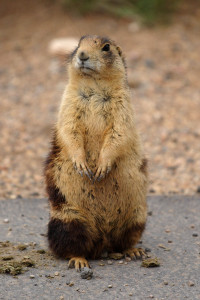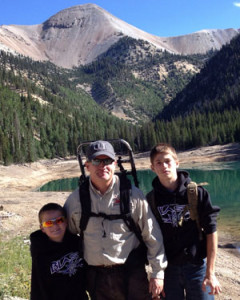By Kevin Bunnel for EDRblog.com.

It’s been over a year since my Prairie Dog EDR Blog highlighted the collaborative effort that helped develop the Federal Low-effect Habitat Conservation Plan for the Utah Prairie Dog in Residential and Commercial Development Areas of Iron County, Utah. Since then, the process took an unexpected turn but has still moved forward successfully with the collaborative development and recent approval of the State of Utah Prairie Dog Management Plan for Non-federal Lands.
Background
The Utah prairie dog (which only occurs in southwestern Utah) has been protected under the Endangered Species Act (ESA) since 1973. Because of this, there are restrictions on how federal, state, and private property can be used where prairie dogs occur — and this has created a great deal of frustration.
District Court Decision
After the approval of the federal plan, U.S. District Court Judge Benson issued a decision in People for the Ethical Treatment of Property Owners v. U.S. Fish and Wildlife Service, basically stating that the federal government cannot manage UT prairie dogs on private property because the species doesn’t occur in more than one state or provide economic value (which are requirements under the Commerce Clause to enforce ESA). This means it is the state’s responsibility on all non-federal lands.
Collaborating Through Uncertainty
While the ruling has been appealed, the state and federal government currently share responsibility to protect the UT Prairie Dog. With this in mind, my agency, UT Division of Wildlife (UDWR) took the lead in working with stakeholders and drafting a reasonable state management plan. We often work with representatives from sportsman, agriculture, and conservation groups. But this process had become so political that collaborative meetings included 2 state legislators, 5 different county Commissioners, 3 representatives from the Attorney General’s Office, the Farm Bureau, private residents and business owners, as well as biologists.
I facilitated meetings but we all agreed from the start that if issues got too contentious we’d bring in an outside professional. I set the agendas, made sure everyone’s opinion was respected, followed-up with action items in between meetings, but most importantly, stakeholders came to meetings (every 10-14 days) willing to participate productively knowing that this was our chance to show that local control can work for the benefit of prairie dogs and people. Another motivating factor was our strict deadline to complete a plan by February so the legislature could allocate funds for implementation. And we were all trying to avoid a stay in the case that would put the original decision on hold until the appeal process is complete.
Success Through Collaboration
Our efforts were successful and Senator Evan Victors sponsored a bill to fund the plan. We received $400,000 as one-time, non-lapsing funds to assess properties, count prairie dogs, and provide compensation for negatively impacted agricultural lands (mostly alfalfa) if owners were willing to forgo lethal control and allow UDWR to trap and relocate dogs to federal lands. We will probably need more funding in the future, but this is a good start…
When stakeholders come to the table, respect different perspectives, and are dedicated to work together. Collaboration works!
 Kevin D. Bunnell was born and raised in Utah. He calls himself an agency brat, as his dad worked for 33 years for the Utah Division of Wildlife (UDWR) and he spent a lot of time with him as a kid and always knew he wanted to be a wildlife biologist. He has BS and MS degrees from BYU and a Ph.D from USU. He has worked for the UDWR for 11 years in the positions of Mammals Coordinator, Wildlife Section Chief and about 2 years ago moved to Cedar City as the Southern Region Supervisor.
Kevin D. Bunnell was born and raised in Utah. He calls himself an agency brat, as his dad worked for 33 years for the Utah Division of Wildlife (UDWR) and he spent a lot of time with him as a kid and always knew he wanted to be a wildlife biologist. He has BS and MS degrees from BYU and a Ph.D from USU. He has worked for the UDWR for 11 years in the positions of Mammals Coordinator, Wildlife Section Chief and about 2 years ago moved to Cedar City as the Southern Region Supervisor.
